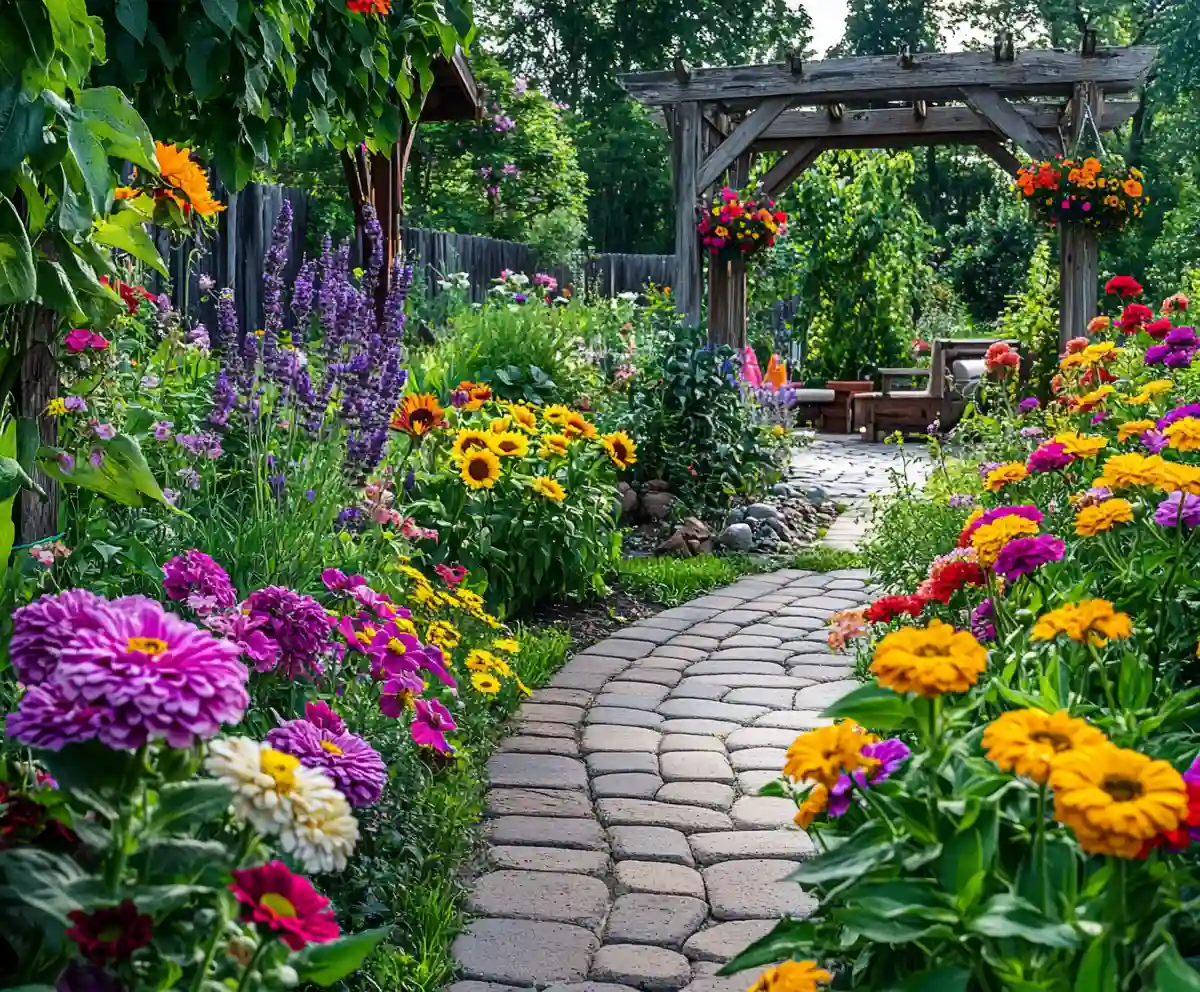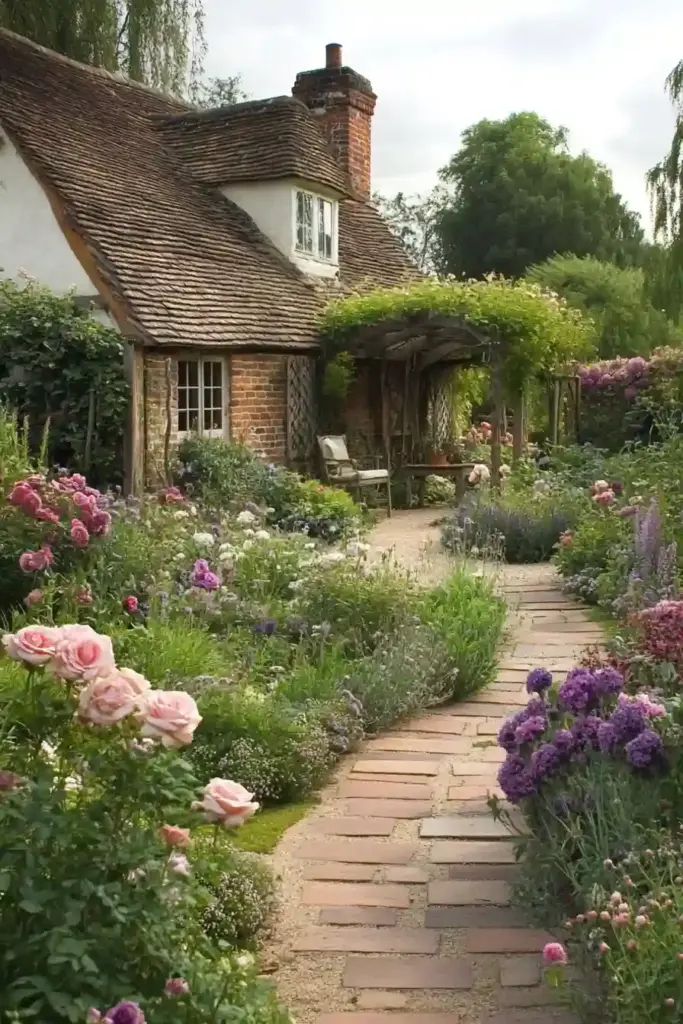There’s nothing quite like stepping outside and snipping fresh blooms straight from your own garden. Whether you’re decorating your kitchen table or gifting a hand-tied bouquet, growing your own cutting flowers adds color, fragrance, and personal joy to every day. The best part? You don’t need a sprawling estate to start. These cut flower garden ideas are perfect for gardeners of all levels and can be tailored to fit everything from small patios to lush backyard landscapes.
In this guide, we’ll explore 11 inspiring cut flower garden designs—each with its own aesthetic and practical perks. From charming cottage-style beds to space-saving vertical solutions, you’ll find ideas that spark creativity and help you build a flower haven that reflects your style.
Table of Contents
🌿 1. The Classic Cottage Garden
If you dream of a flower-filled garden that feels both enchanting and effortless, a classic cottage-style cut flower garden is a timeless choice. Inspired by old English gardens, this design blends charm with a touch of wild beauty—perfect for gardeners who love color, fragrance, and an organic layout.
Key Features:
- Mixed plantings: Combine perennials like echinacea and delphiniums with annuals like cosmos or snapdragons for layers of blooms.
- Fragrant favorites: Roses, sweet peas, and lavender bring both aroma and allure.
- Herbs as companions: Add in herbs like thyme, mint, and basil for a touch of utility and a natural pollinator magnet.
Planting Tips:
- Go with the flow: Avoid rigid rows. Instead, plant in informal drifts to mimic nature’s spontaneity.
- Stagger bloom times: Choose varieties that flower at different intervals to ensure a continual harvest throughout the growing season.
Design Inspiration:
- Curving pathways: Winding gravel or brick paths invite exploration.
- Rustic touches: Think wooden trellises, vintage watering cans, or an antique bench tucked under a rose arch.
This style is ideal for gardeners who enjoy a bit of whimsy and want their landscape to feel like a living storybook. It’s as much about beauty as it is about joy.
🖤 2. The Modern Minimalist Garden
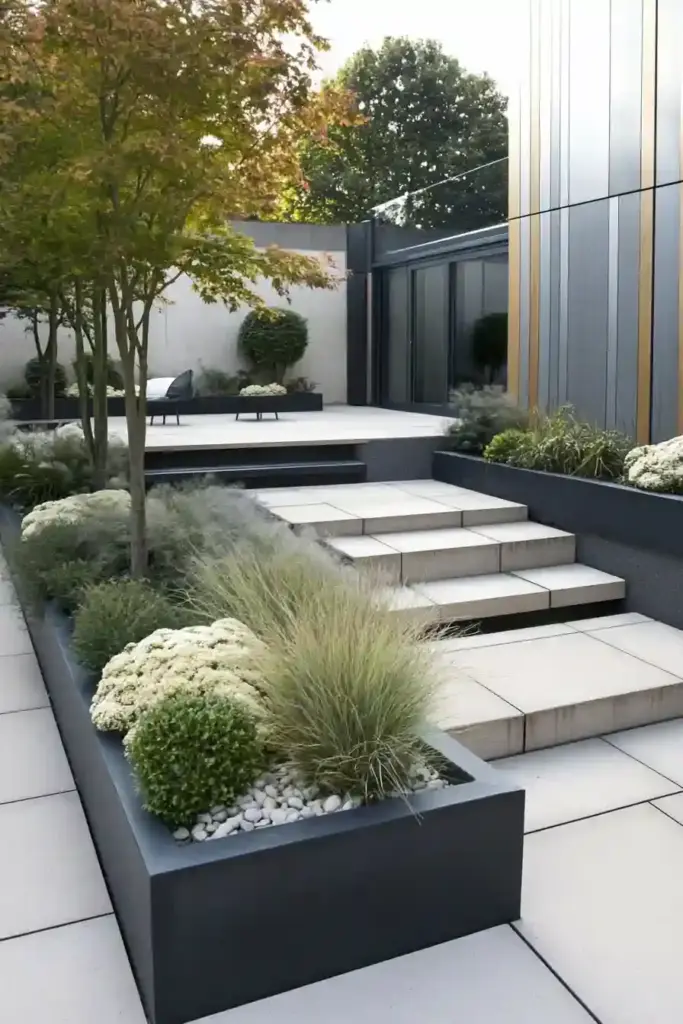
Prefer clean lines and an uncluttered aesthetic? A modern minimalist cut flower garden brings elegance and order to your outdoor space without sacrificing beauty. This style focuses on simplicity, structure, and subtle color contrasts—ideal for urban gardeners or those with a contemporary design sensibility.
Key Features:
- Streamlined plant selection: Stick to a restrained color palette—think whites, deep purples, and cool greens.
- Architectural blooms: Tall, sculptural plants like alliums, globe thistles, and ornamental grasses take center stage.
- Symmetry and structure: Raised beds or sleek metal planters bring a sense of balance and precision.
Planting Tips:
- Go bold with repetition: Plant the same variety in rows or blocks for a cohesive and polished look.
- Think foliage-first: Include plants with striking leaves—like dusty miller or lamb’s ear—for year-round visual interest.
Design Inspiration:
- Monochrome magic: Choose flower shades that match or gently contrast your outdoor furniture or hardscaping.
- Modern materials: Incorporate concrete planters, black mulch, or brushed steel trellises for a chic, finished vibe.
This garden style works beautifully in small spaces and looks stunning against modern architecture. It proves that a cut flower garden can be both practical and Instagram-worthy.
🐝 3. The Pollinator Paradise
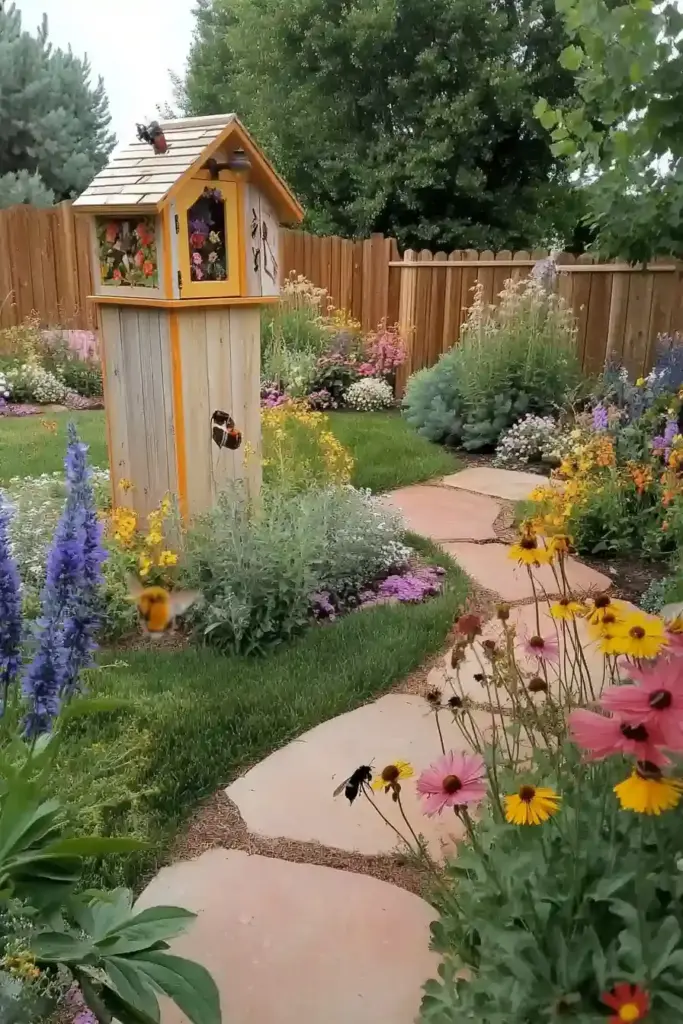
If your goal is to grow beautiful blooms and support local ecosystems, a pollinator-friendly cut flower garden is the way to go. Designed to attract bees, butterflies, and hummingbirds, this garden is as lively as it is lovely. Plus, pollinators improve flower production—meaning more blossoms for your vases.
Key Features:
- Native and nectar-rich plants: Coneflowers, bee balm, black-eyed Susans, and milkweed offer both beauty and nourishment.
- Flower diversity: Mix a range of shapes and colors to appeal to a variety of pollinators.
- Clustered planting: Group the same flower types together so pollinators can easily forage.
Planting Tips:
- Bloom succession: Include early-, mid-, and late-season flowers to provide food throughout the growing year.
- Skip the sprays: Avoid pesticides and opt for organic methods to keep your pollinators safe and thriving.
Design Inspiration:
- Butterfly hotspots: Add a butterfly bush or native milkweed as a central feature.
- Natural layers: Combine tall sunflowers in the back with shorter daisies and zinnias up front for a layered, meadow-like feel.
This garden is perfect for those who love vibrant color, fluttering wings, and the hum of nature hard at work. Bonus: you’ll likely see an uptick in veggie yields if you’re growing edibles nearby!
🌿 4. The Vertical Garden
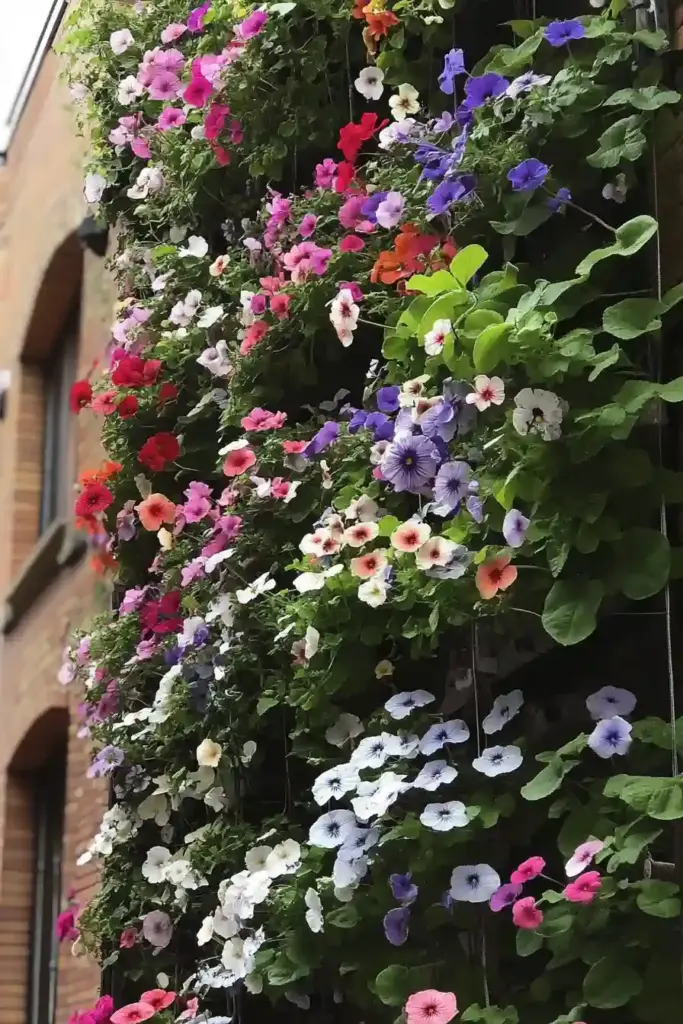
Limited on space but big on floral dreams? A vertical cut flower garden is your solution. By growing upward instead of outward, you can turn even the smallest balcony, patio, or wall into a blooming masterpiece. This style is practical, space-saving, and visually striking.
Key Features:
- Climbing favorites: Morning glories, clematis, sweet peas, and nasturtiums are perfect for vertical growth.
- Smart supports: Use trellises, wall-mounted planters, vertical pallets, or tiered hanging baskets.
- Layered textures: Mix vines with upright flowers like foxglove or snapdragons for depth and contrast.
Planting Tips:
- Choose light climbers: Pick varieties that won’t overwhelm your supports.
- Ensure drainage: Vertical planters need proper watering and drainage to prevent root rot.
- Rotate plants: Swap in seasonal blooms to keep your wall vibrant year-round.
Design Inspiration:
- Living wall art: Create geometric designs with planter boxes in coordinated colors.
- Night glow: Add string lights or solar lanterns to illuminate your vertical garden after dark.
Whether you’re working with a city balcony or a narrow side yard, this garden design turns unused vertical space into a lush, flowering focal point. It’s functional, beautiful, and totally doable—even for renters!
✂️ 5. The Cutting Garden
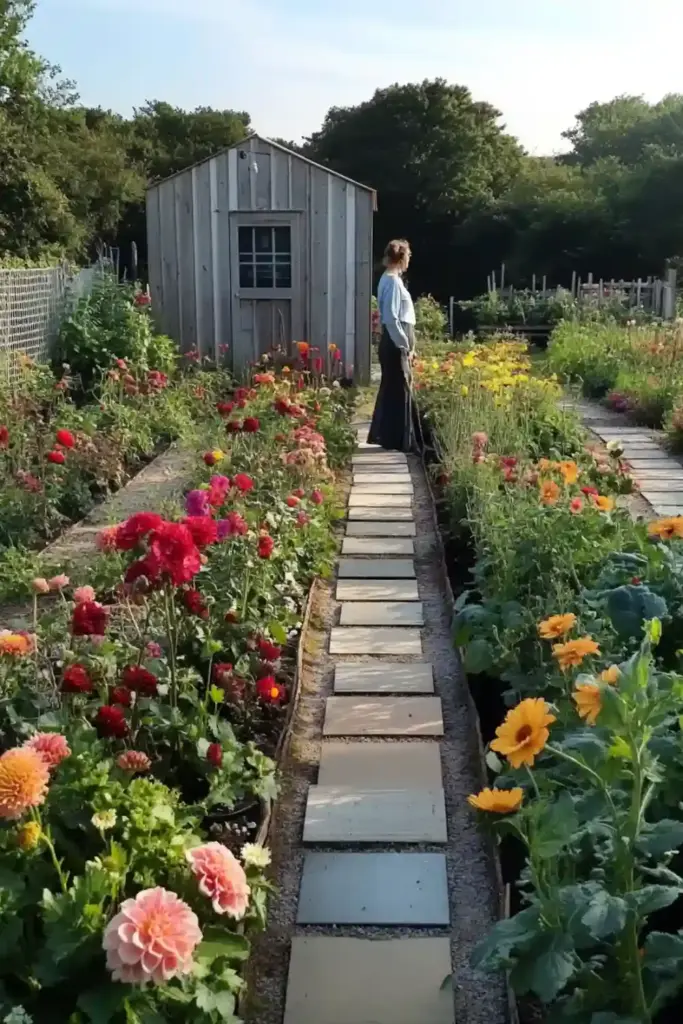
If your main goal is to harvest fresh flowers for vases, gifts, or arrangements, a dedicated cutting garden is your best bet. This design prioritizes function without sacrificing charm, offering easy access to high-yield blooms all season long.
Key Features:
- Long-stemmed stars: Grow heavy hitters like zinnias, dahlias, cosmos, sunflowers, and snapdragons.
- Organized layout: Plant in rows or blocks by bloom time or color for efficient cutting and maintenance.
- Practical additions: Paths, raised beds, and even a tool station make harvesting a breeze.
Planting Tips:
- Full sun is key: Most cutting flowers thrive with 6–8 hours of direct sunlight.
- Succession planting: Stagger sowing every few weeks to extend your bloom season.
- Soil matters: Prep with compost-rich, well-drained soil for healthy, productive plants.
Design Inspiration:
- Bouquet zones: Group flowers by color palette—romantic pastels, bold brights, or monochromes—to make arranging easier.
- Functional beauty: Include a small potting bench or vase station to keep everything tidy and enjoyable.
Whether you’re arranging weekly bouquets for the dining table or building a side hustle with farmers market blooms, a cutting garden gives you maximum payoff with minimal fuss.
🌸 6. The Edible Flower Garden
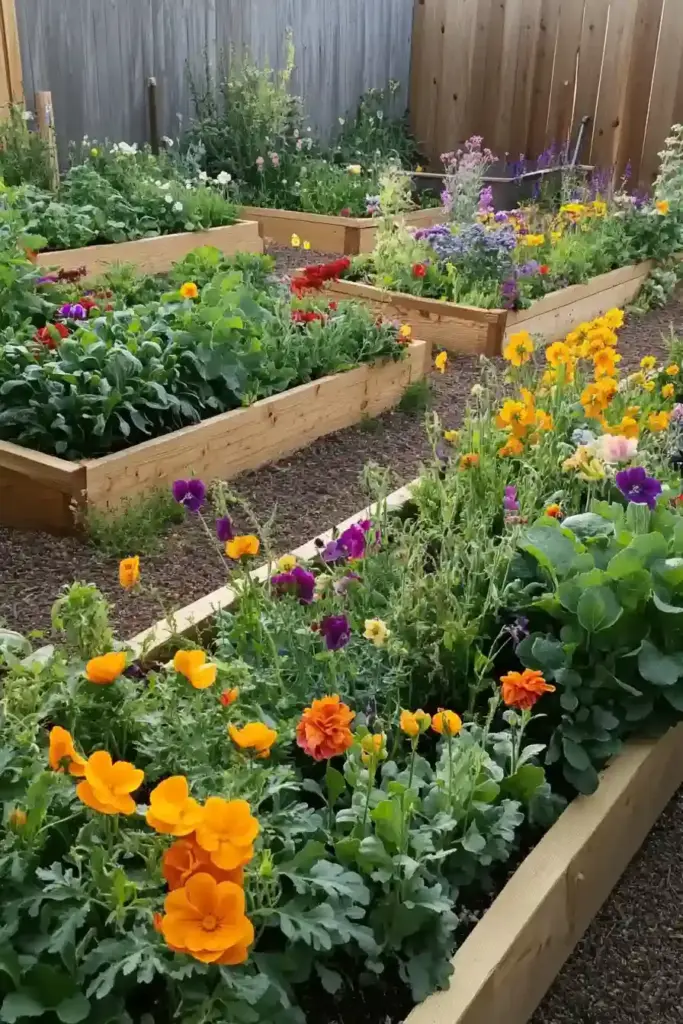
Why settle for just beautiful when you can have beautiful and delicious? An edible flower garden blends visual charm with culinary creativity, giving you blooms that look stunning in arrangements and taste great in salads, teas, and desserts.
Key Features:
- Dual-purpose plants: Grow edible varieties like nasturtiums, calendula, pansies, violets, borage, and chive blossoms.
- Herbs and veggies with blooms: Add flowering herbs like basil, thyme, and dill for both beauty and flavor.
- Color meets cuisine: This garden is bursting with vibrant colors and unique textures perfect for garnishes or infusions.
Planting Tips:
- Know what’s safe: Only use flowers that are verified edible and free from pesticides.
- Full sun + drainage: Most edible flowers prefer 6+ hours of sun and well-drained soil.
- Harvest thoughtfully: Pick blooms in the morning for peak flavor and fragrance.
Design Inspiration:
- Herb spirals or raised beds: These not only improve drainage but add dimension to your layout.
- Edible borders: Use colorful pansies or calendula as edging for veggie or flower beds.
This garden is a dream for foodies, mixologists, or anyone who wants to elevate their home cooking with homegrown floral flair. It’s beauty you can taste.
💧 7. The Water-Wise Garden
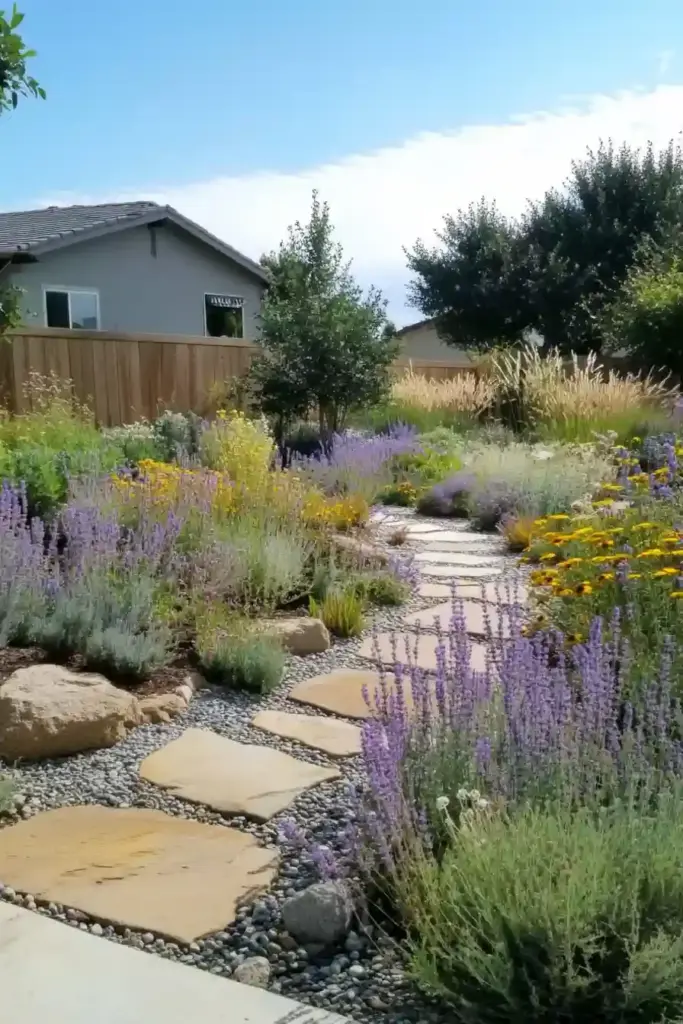
Live in a dry climate or just want to conserve water? A water-wise cut flower garden combines drought-tolerant blooms with smart design to reduce water usage without skimping on beauty. It’s ideal for hot summers, busy gardeners, or anyone looking to make their outdoor space more sustainable.
Key Features:
- Drought-tolerant blooms: Lean on hardy picks like lavender, yarrow, coneflowers, rudbeckia, and salvia.
- Efficient irrigation: Drip systems, soaker hoses, or even rain barrels help minimize waste.
- Texture-rich plants: Fuzzy leaves and bold shapes add visual interest, even when water is limited.
Planting Tips:
- Group by water needs: Place thirsty plants together and separate them from tougher varieties.
- Use mulch generously: Mulch locks in moisture and keeps roots cool.
- Time your watering: Early morning watering reduces evaporation and supports healthy root systems.
Design Inspiration:
- Gravel pathways or stone borders: Reduce runoff and enhance the xeriscape aesthetic.
- Rain gardens or swales: These features help collect and distribute water naturally.
This garden is proof that being low-maintenance and eco-friendly doesn’t mean sacrificing color or vibrancy. It’s smart, stylish, and kind to the planet.
🪴 8. The Container Garden
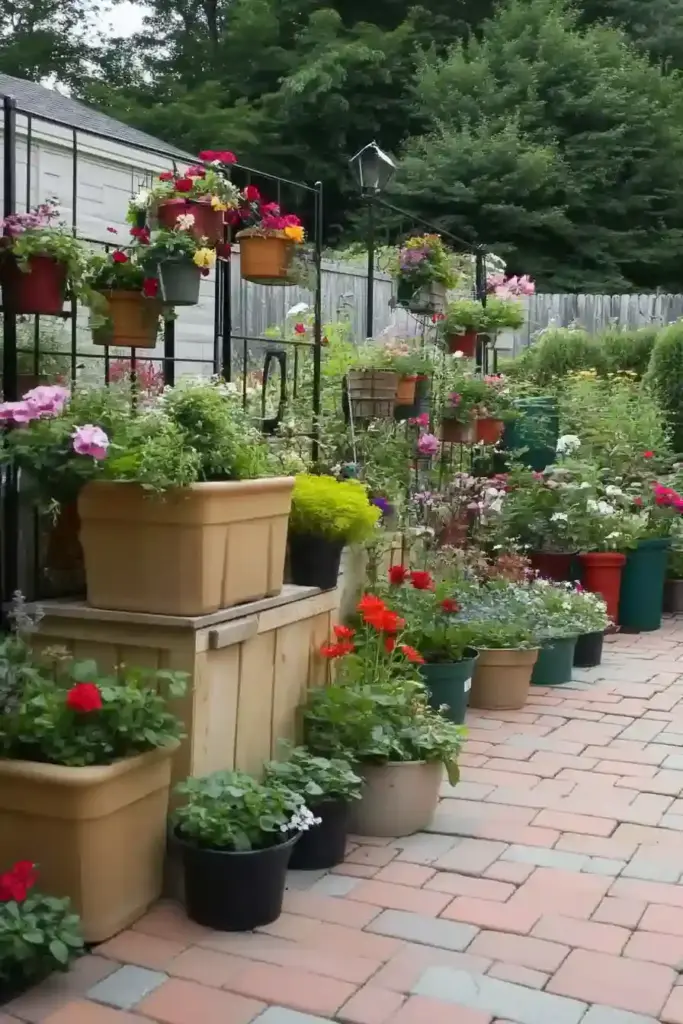
Whether you’re working with a patio, balcony, or just like rearranging your blooms on a whim, a container cut flower garden is the ultimate in versatility. Containers let you control soil, sun exposure, and even design style—making them perfect for renters, beginners, or small-space dwellers.
Key Features:
- Varied vessels: Use everything from classic terracotta pots to upcycled buckets, hanging baskets, and vertical towers.
- Mix it up: Combine annuals like petunias and marigolds with perennials like coreopsis or dwarf dahlias.
- Easy to manage: Container gardening minimizes weeding and makes pests easier to spot and handle.
Planting Tips:
- Drainage is non-negotiable: Use containers with holes and add a layer of gravel or broken pottery for best results.
- Use quality potting mix: Regular garden soil compacts too much in containers—opt for lightweight, nutrient-rich mixes.
- Feed regularly: Container plants need more frequent fertilizing, especially heavy bloomers.
Design Inspiration:
- Color themes: Go bold with color-blocked pots or coordinate blooms to match your outdoor furniture.
- Tiered staging: Use plant stands, steps, or crates to create height and flow in small spaces.
A container flower garden is a moveable feast of blooms that evolves with the seasons—and your style. Perfect for adding instant impact to porches, patios, or even window sills.
🌼 9. The Seasonal Garden
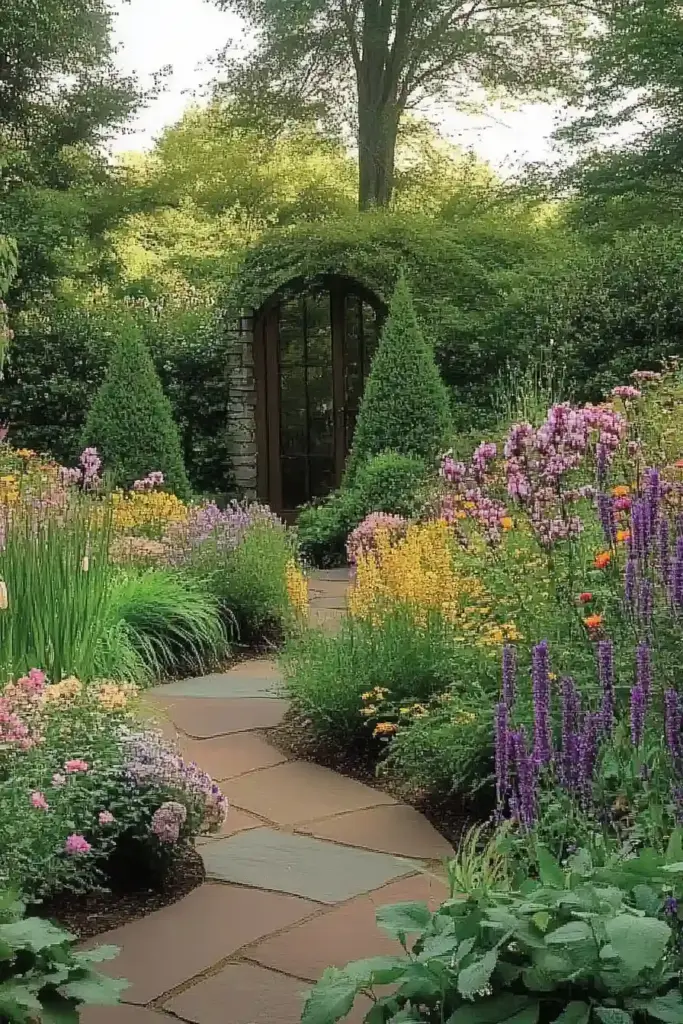
Want a flower garden that never skips a beat? A seasonal cut flower garden is designed to bloom through spring, summer, fall, and even winter with the right planning. By layering bulbs, annuals, perennials, and evergreens, you can enjoy fresh cut flowers no matter the month.
Key Features:
- Year-round interest: Combine early spring bulbs like tulips and daffodils with summer favorites like lilies and cosmos, followed by fall-blooming asters and chrysanthemums.
- Evergreen structure: Incorporate shrubs or ornamental grasses that provide visual interest even in the off-season.
- Color waves: Transition your palette through the year for a dynamic and ever-changing garden.
Planting Tips:
- Succession planting: Plan ahead and stagger sowing to maintain continuous blooms.
- Local climate awareness: Choose varieties suited to your hardiness zone for the best success.
- Prep in phases: Focus on one season at a time to build a rhythm of planting, blooming, and cutting.
Design Inspiration:
- Seasonal centerpiece beds: Design focal areas that change with the seasons—think a tulip patch in spring and a sunflower row in late summer.
- Layered beds: Plant taller perennials in the back with low-growing bulbs and annuals in front for constant fullness.
A seasonal garden ensures you’ll always have something in bloom, bringing joy and vibrancy indoors every week of the year.
🛠️ 10. The DIY Cut Flower Garden
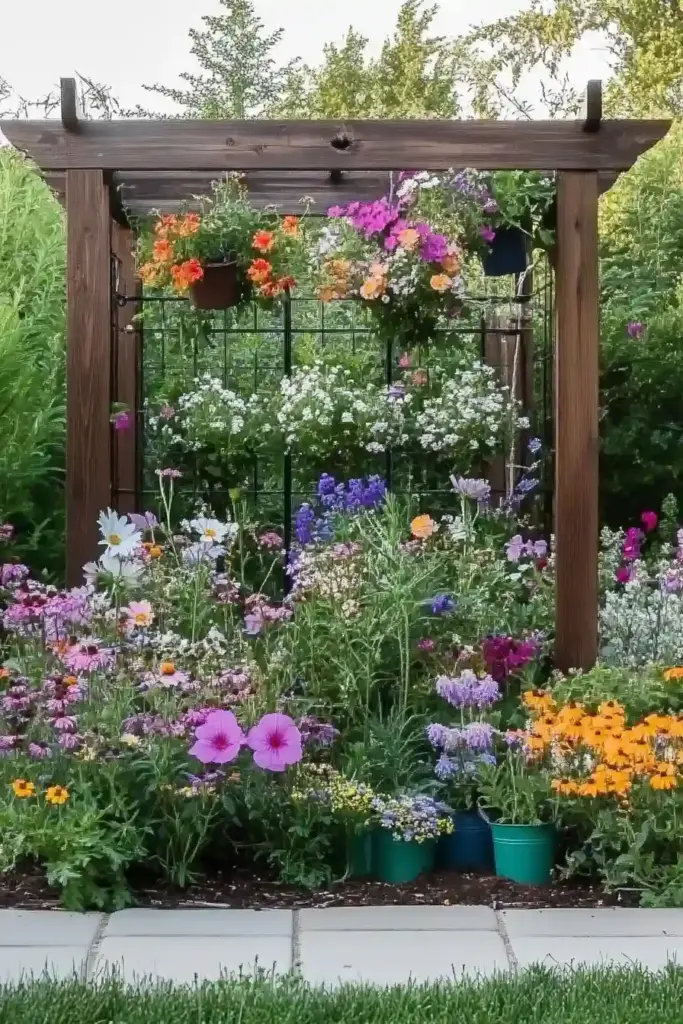
Love to get hands-on and make your garden truly your own? A DIY cut flower garden is all about creativity, personalization, and using what you’ve got. Whether you’re building raised beds from reclaimed wood or designing a quirky trellis from old bike wheels, this garden style reflects you.
Key Features:
- Creative structures: Think homemade planters, pallet walls, and repurposed containers.
- Unique plant pairings: Combine your favorite flowers—no matter the “rules”—to create something one-of-a-kind.
- Upcycled charm: Old ladders, crates, even rain boots can become blooming masterpieces.
Planting Tips:
- Easy growers first: Choose beginner-friendly flowers like zinnias, sunflowers, calendula, and cosmos for quick wins.
- Experiment often: Test layouts, colors, and companion plants. Keep what works, tweak what doesn’t.
- Label your work: Use hand-painted signs or repurposed spoons as garden markers.
Design Inspiration:
- Statement DIYs: Create a centerpiece like a trellis made from old window frames or a wheelbarrow-turned-flower-bed.
- Art meets nature: Integrate painted rocks, wind chimes, or handmade stepping stones for added personality.
This garden isn’t about perfection—it’s about expression. It’s ideal for those who see their yard as a canvas and love the process just as much as the petals.
🌺 11. The Backyard Oasis
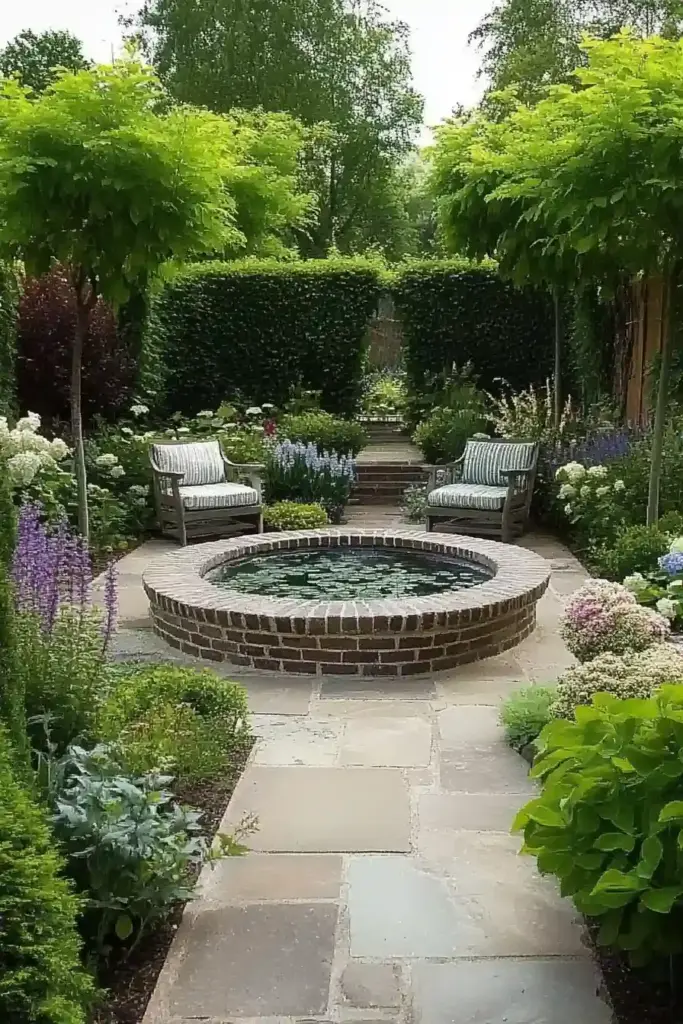
Imagine stepping outside into a lush space filled with blooms, soft seating, and the calming sound of water. A backyard oasis cut flower garden is more than a place to grow—it’s a place to unwind. This garden blends aesthetics with comfort, creating a floral sanctuary perfect for relaxing, entertaining, or simply sipping your morning coffee.
Key Features:
- Multi-layered planting: Combine flowering trees, tall perennials, shrubs, and low-growing blooms for a full, immersive feel.
- Relaxation zones: Add a cozy bench, hammock, or bistro set right in the heart of your blooms.
- Sensory elements: Incorporate fragrant plants (like jasmine or gardenia), soft textures, and gentle lighting.
Planting Tips:
- Low-maintenance varieties: Opt for hardy, long-blooming flowers like coreopsis, hydrangea, and echinacea to minimize upkeep.
- Soothing color palettes: Use calming hues like soft pinks, whites, blues, and greens for a tranquil vibe.
- Balance sun and shade: Mix sun-loving and shade-tolerant plants to make the space usable all day.
Design Inspiration:
- Central features: Create a focal point with a water feature, small fire pit, or pergola covered in climbing roses.
- Pathways & privacy: Define space with stepping stones, trellises, or tall plants for a secluded, secret-garden feel.
This garden style transforms your backyard into a personal escape—a floral hideaway where you can relax, reconnect, and recharge.
🌟 Conclusion: Start Your Cut Flower Garden with Confidence
No matter your space, style, or gardening experience, there’s a cut flower garden idea here to inspire your next planting project. Whether you’re drawn to the charm of a cottage garden, the creativity of a DIY setup, or the tranquility of a backyard oasis, growing your own blooms is deeply rewarding.
Not only will you enjoy fresh flowers all season long, but you’ll also cultivate joy, mindfulness, and a deeper connection to nature. So grab your gloves, pick a design that speaks to you, and start planting beauty—one bloom at a time.
🌿 Love gardening inspiration? Follow me on Pinterest for bold plant ideas, tips, and seasonal color!
More Posts
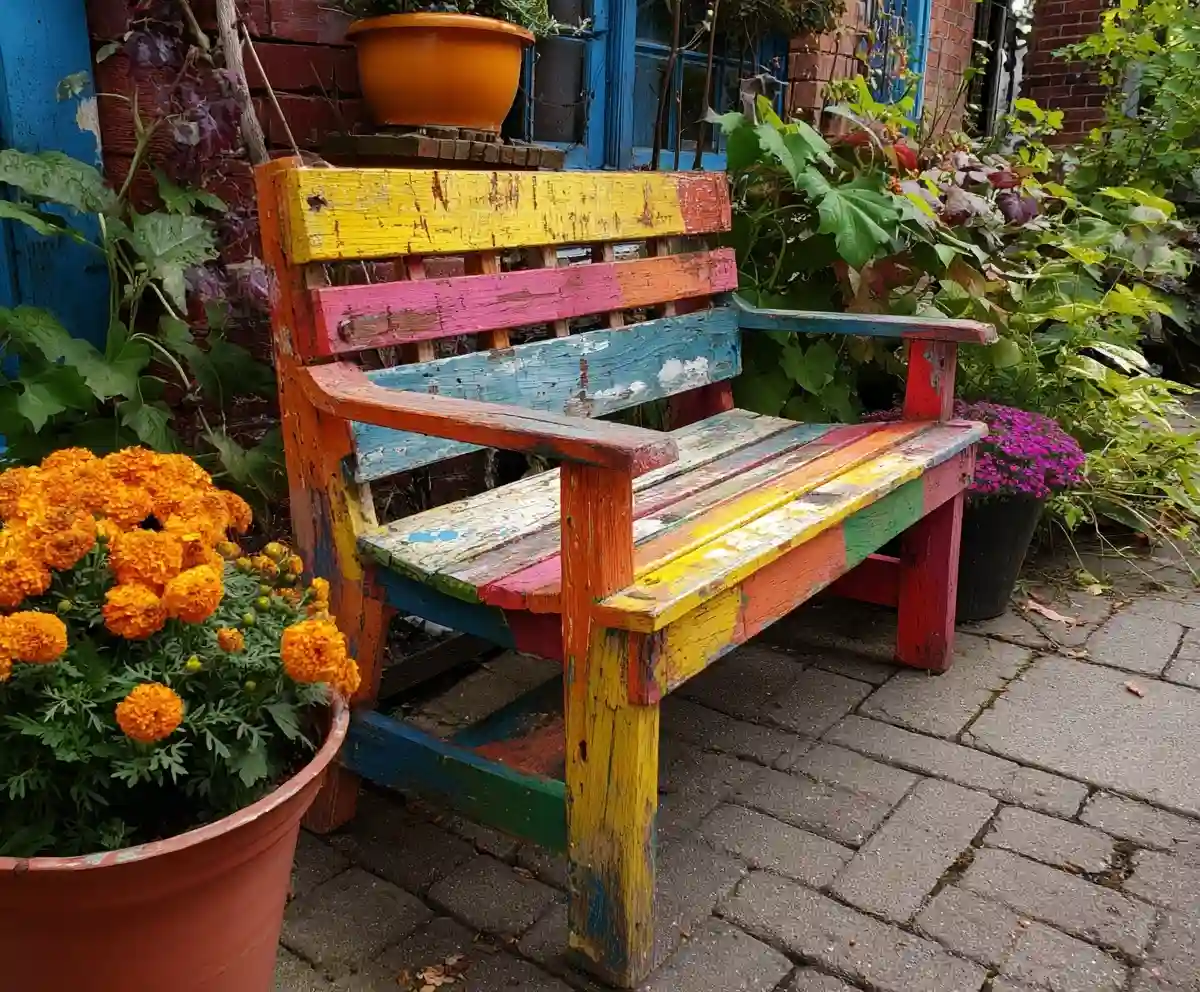
19+ Budget-Friendly Backyard Makeover Ideas
Backyard makeover ideas can turn even the most ordinary outdoor space into a warm, inviting retreat—without draining your wallet.
Read More →
21 Stunning & Simple DIY Clematis Trellis Designs
DIY clematis trellis designs are a beautiful way to blend creativity with function in your garden.
Read More →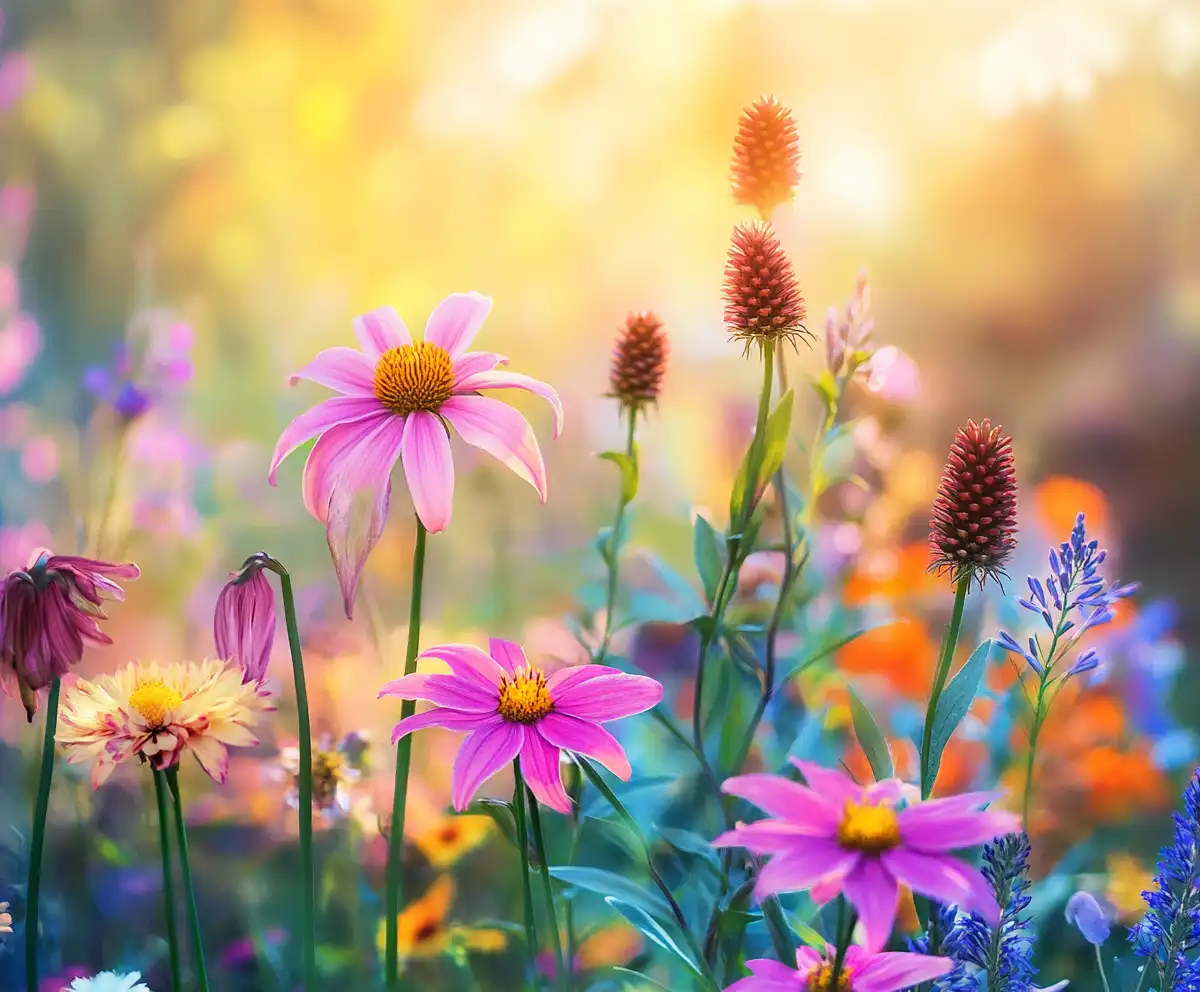
12 Full Sun Perennials That Bloom All Summer
Explore a selection of hardy perennials that flourish and bloom beautifully in full sun throughout the summer.
Read More →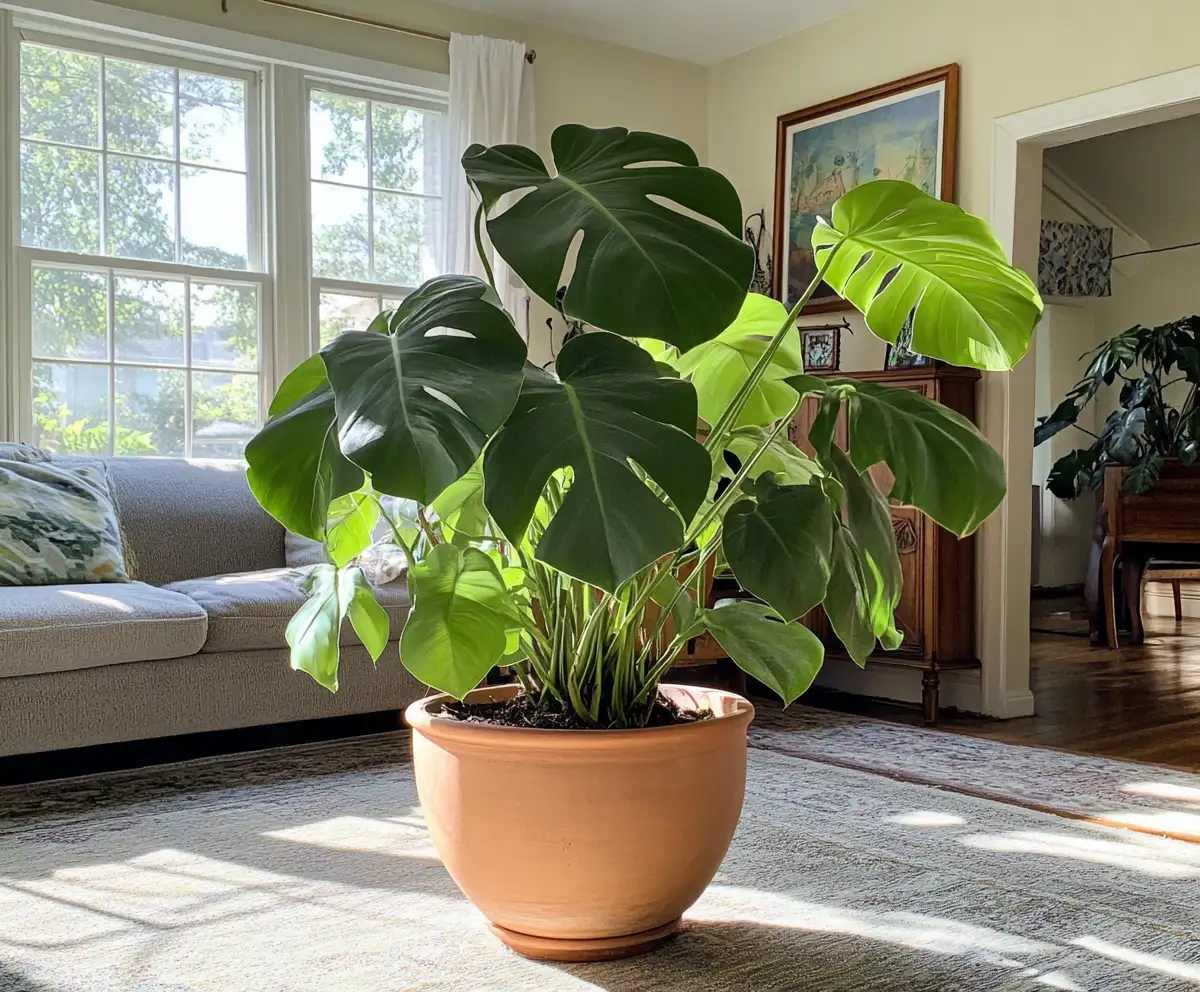
Houseplants for Living Room
Find the perfect houseplants to brighten and purify your living room while adding a touch of nature indoors.
Read More →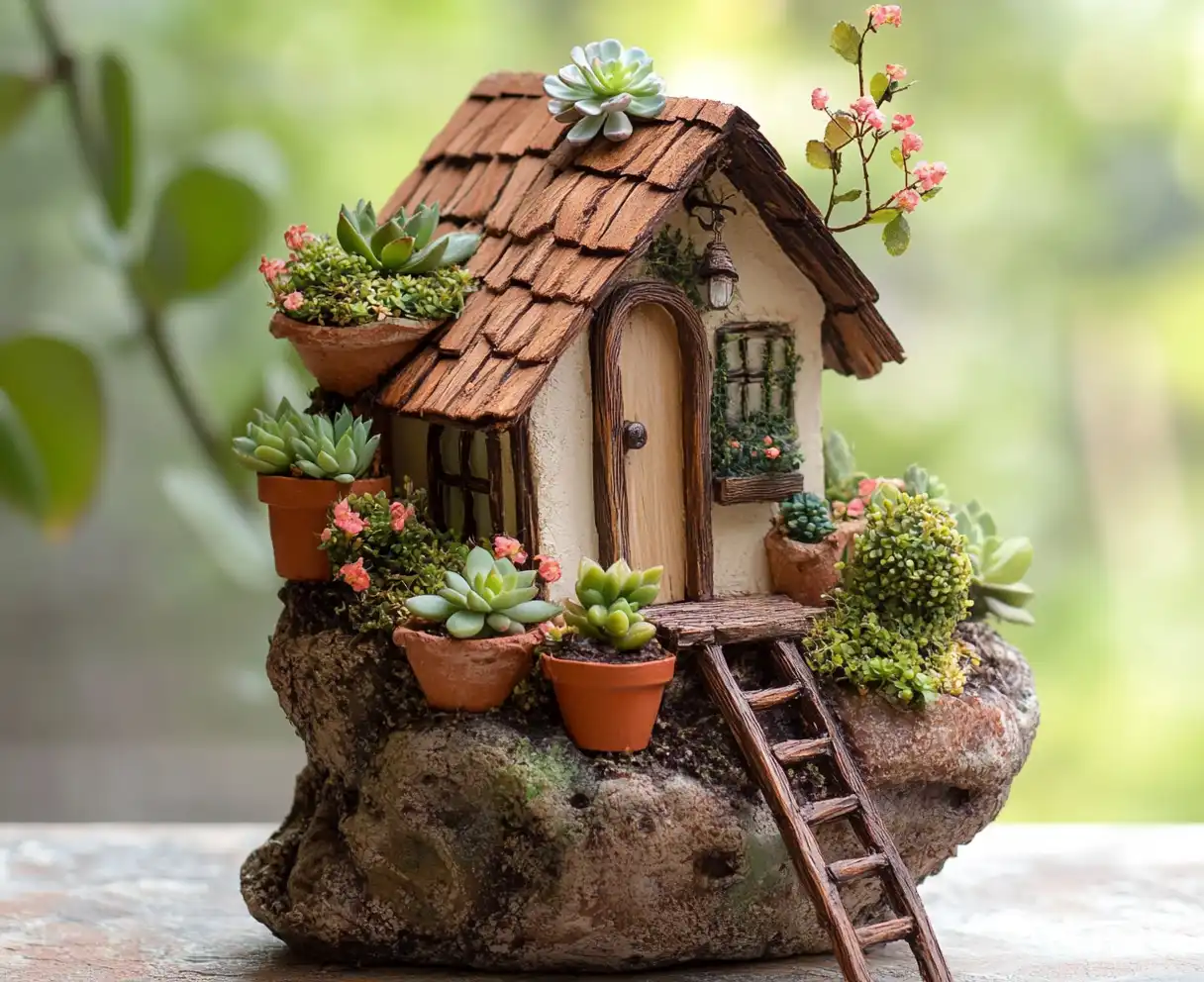
Backyard Play Area for Kids
Create a fun and safe backyard play area for kids with these inspiring design ideas and tips.
Read More →
Top Privacy Trees
Discover top tree varieties that provide natural privacy and enhance your outdoor space.
Read More →
